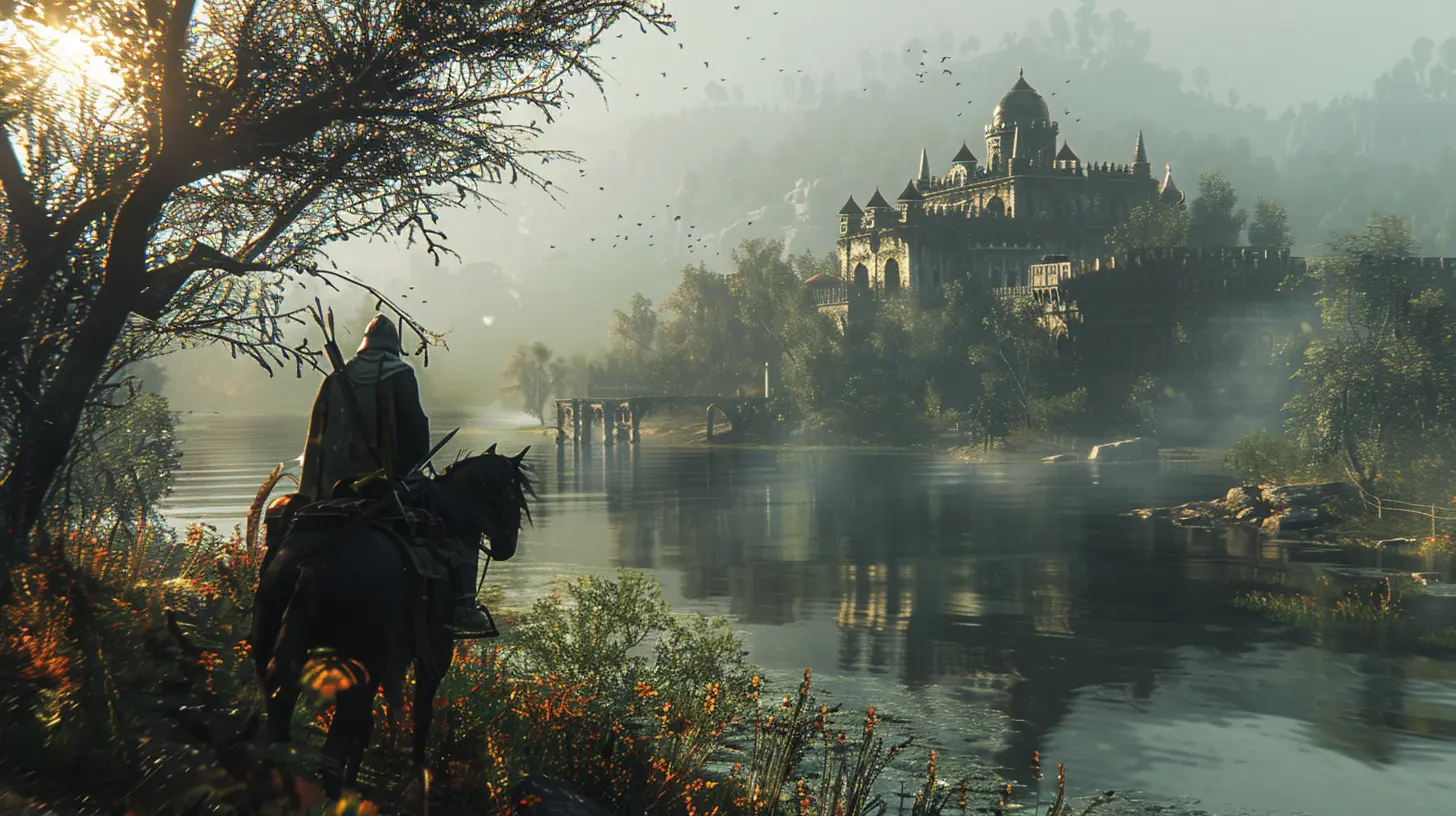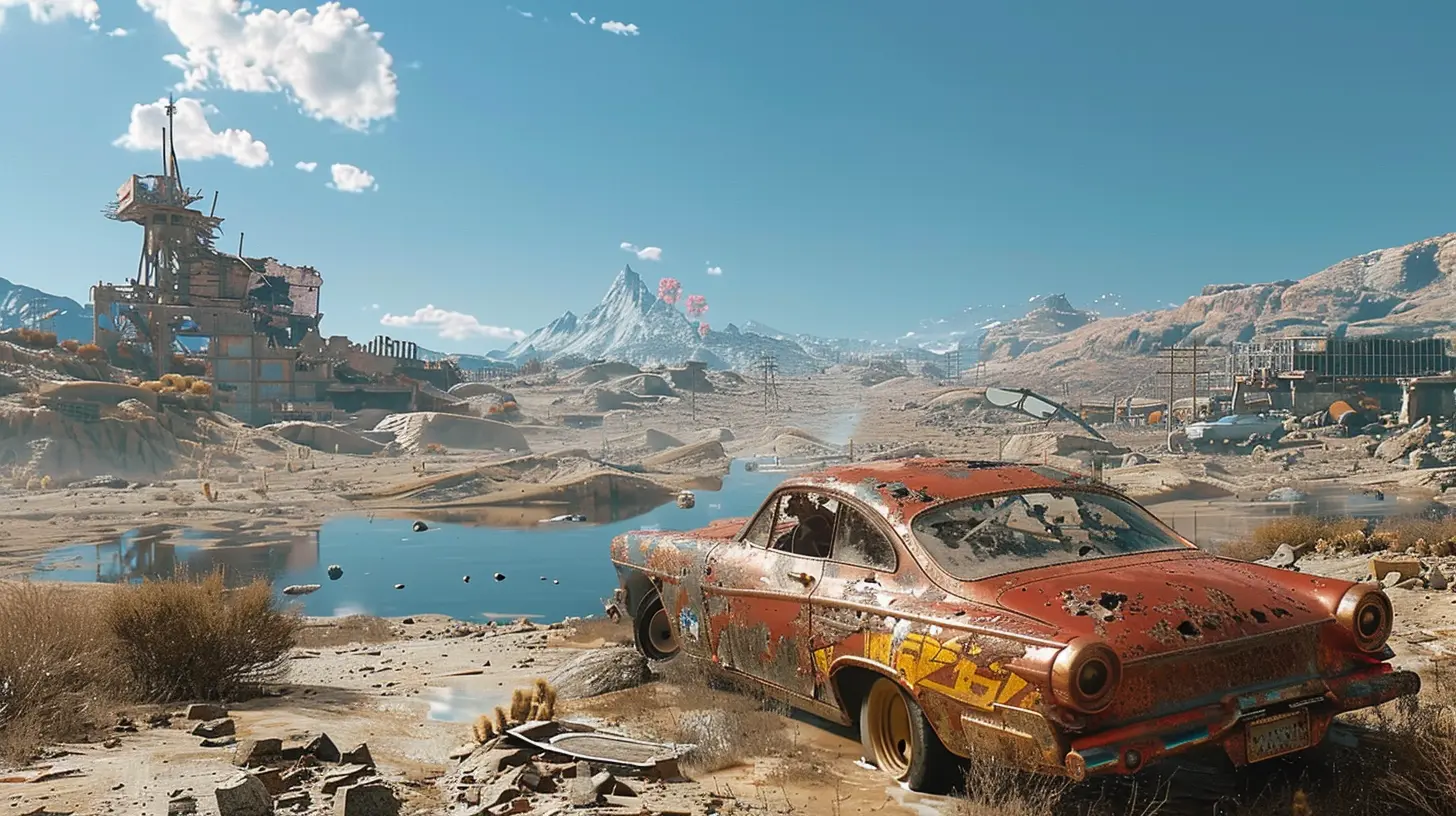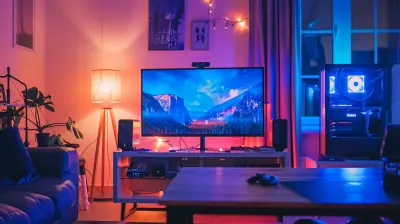The Role of Field of View and Camera Angles in Realism
15 September 2025
Have you ever stopped mid-game to appreciate how a virtual world feels so, well, real? Whether it's the sweeping landscapes of an open-world RPG or the claustrophobic corridors of a survival-horror game, one thing’s for sure: the way we see the game influences how real it feels. Welcome to the hidden science of Field of View (FOV) and camera angles—two technical elements that can transform a game from good to "I-just-lost-three-hours-of-my-life-immersed-in-this."
Both FOV and camera angles play a massive role in shaping how we experience digital environments. So, let’s dive deeper into how these features work their magic to create realism, captivate players, and, sometimes, even mess with our heads.
What Is Field of View (FOV)?
Field of View (FOV) refers to the extent of the game world that’s visible on your screen at any given moment. Think of it as your virtual peripheral vision. It’s measured in degrees and determines how wide or narrow your perspective is within the game.Imagine standing on a hill in real life, gazing at the horizon. If you had a narrow FOV, you'd see only a thin slice of the view, like looking through a telescope. On the other hand, a wide FOV captures everything: the rolling hills, the clouds, maybe even that squirrel stealing your snacks. In gaming, FOV is like choosing between tunnel vision and panorama mode.
Why FOV Matters for Realism
So why does FOV even matter? Here’s the deal: our brains are wired to process the world in a certain way. If something feels “off,” we notice it—even if we can’t immediately figure out what’s wrong. A poorly configured FOV can make a game feel unnatural, and, trust me, nothing kills immersion like your brain calling out the "fake vibes."1. Wide FOV: Putting the Player "There"
A wide FOV often feels immersive because it mimics how we naturally see the real world. This is why games that emphasize exploration, like The Legend of Zelda: Breath of the Wild, typically use wider FOVs. They want you to soak in the grandeur of sprawling landscapes and feel like a tiny adventurer in a massive world.Imagine hiking in a forest. With a wide FOV, you’d see the surrounding trees, distant mountains, and maybe even catch a glimpse of movement to your side—a rabbit darting through the underbrush. This visual spread makes the experience feel alive and dynamic.
2. Narrow FOV: Designed for Drama
On the flip side, a narrow FOV is perfect for creating tension and controlling focus. Think about first-person horror games like Outlast. By narrowing your FOV, developers limit what you can see, heightening the sense of dread. You’re forced to focus on what's directly in front of you, making every creak and shadow feel like a potential threat.Narrow FOV can also make certain environments feel claustrophobic or intimate. It’s as if the walls are closing in—because, visually, they kind of are.
3. Realism Relies on Balance
Here’s the kicker: realism isn’t about cranking the FOV all the way up or down. It’s about finding the sweet spot that matches the game’s context. A high FOV might work wonders for a fast-paced shooter like Call of Duty, but it could feel distracting in a slower, story-driven game like The Last of Us.Game developers carefully tweak FOV settings to match the tone and pacing of their games, ensuring the experience feels natural—and ultimately, real.
Camera Angles: The Director of Your Virtual Experience
While FOV determines what you see, camera angles decide how you see it. It’s like being in a movie, except you’re the lead actor and (sometimes) the director. Camera angles can drastically affect how players interpret what’s happening on screen.
How Camera Angles Shape Realism
1. First-Person Perspective: Immersing You in the Game
When you play a game from a first-person perspective, you’re seeing the world as if through your own eyes. This perspective is a favorite for immersive genres because it connects you directly to the character. In games like Half-Life or Skyrim, you’re not just watching an adventure unfold—you are the adventure.But first-person isn’t perfect. While it’s brilliant for immediacy, it can sometimes feel disorienting, especially if the FOV isn't calibrated properly. And let’s not forget motion sickness—a real problem for some players when the camera mimics rapid head movements.
2. Third-Person Perspective: A Wider Lens on the Action
Third-person perspective lets you view your character and their surroundings simultaneously. This angle is popular in action-adventure games like Uncharted or Tomb Raider because it balances immersion with spatial awareness. You don’t just see what’s ahead—you also see what’s behind and around you.Ever noticed how the camera sometimes zooms in tight during dialogue scenes and then pulls back during action sequences? That’s no accident. These subtle shifts in perspective help emphasize certain emotions and events, adding layers of realism and storytelling.
3. Dynamic Cameras: The Director in the Background
Some games take it up a notch with dynamic cameras. Picture this: you’re sprinting down a hallway in a horror game, and the camera suddenly tilts at a Dutch angle (slightly diagonal). Your heart skips a beat because it feels off-kilter, chaotic—just like the situation your character is in.Games like Resident Evil and God of War (2018) often use dynamic camera angles to direct your attention or evoke specific feelings. It’s like having a sneaky movie director guiding your experience without you realizing it.
How FOV and Camera Angles Work Together
FOV and camera angles are like peanut butter and jelly—they’re great on their own, but together, they create something magical. A well-designed game will use both elements in harmony to pull you deeper into its world.Take driving games, for instance. A wide FOV paired with a third-person perspective lets you admire the car and the environment as you zip through the roads in Forza Horizon. Meanwhile, switching to a first-person view with a slightly narrower FOV gives you the “behind-the-wheel” experience, complete with dashboard details and side mirrors. These choices allow players to tailor their experience while retaining a sense of realism.
When Things Go Wrong: The Dangers of Bad Design
Of course, not every game gets it right. If the FOV is too low, you can feel boxed in, almost like you’re walking around with blinders on. Too high, and everything can look distorted—like fish-eye lens photography.Moreover, poorly chosen camera angles can lead to frustration. Ever had the camera spin wildly while you’re trying to dodge an enemy? Yeah, we’ve all been there. It breaks the flow and reminds you that you’re playing a game, shattering any sense of realism.
The Emergence of Player-Controlled Options
The good news is that many modern games let players customize FOV and camera settings. This trend is a win-win: developers can provide a baseline experience, while players tweak the settings to fit their preferences.For instance, competitive gamers often prefer a wider FOV for better awareness, while casual players might opt for something narrower to focus on the details. Flexibility means everyone can enjoy games in a way that feels natural to them.
The Future of FOV and Camera Angles in Gaming
Technology continues to push boundaries. With the rise of VR (Virtual Reality) and AR (Augmented Reality), FOV and camera perspectives are evolving in ways we never imagined. VR headsets offer an almost lifelike FOV that mimics how our eyes see the world, while AR games overlay virtual elements onto our physical surroundings.It’s clear that the quest for realism in gaming is only getting started—and FOV and camera angles will remain at the heart of that journey.
Conclusion
At first glance, Field of View and camera angles might seem like minor technical details—but they’re anything but. They’re the invisible threads that weave realism into our favorite games, making us feel like we’re part of the story. Whether it’s a narrow, tension-filled viewpoint in a horror game or a sweeping landscape in an RPG, these elements work together to create the magic we call immersion.So next time you boot up your favorite game, take a second to appreciate the view. Chances are, a lot of careful thought went into making it feel just right.
all images in this post were generated using AI tools
Category:
Realism In GamesAuthor:

Lana Johnson
Discussion
rate this article
1 comments
Lola Beck
Great article! You captured how field of view and camera angles significantly enhance realism in games. These elements shape player immersion and experience, making them essential for modern game design.
September 22, 2025 at 4:15 PM

Lana Johnson
Thank you for your kind words! I'm glad you found the article insightful. Field of view and camera angles truly play a crucial role in enhancing immersion.


